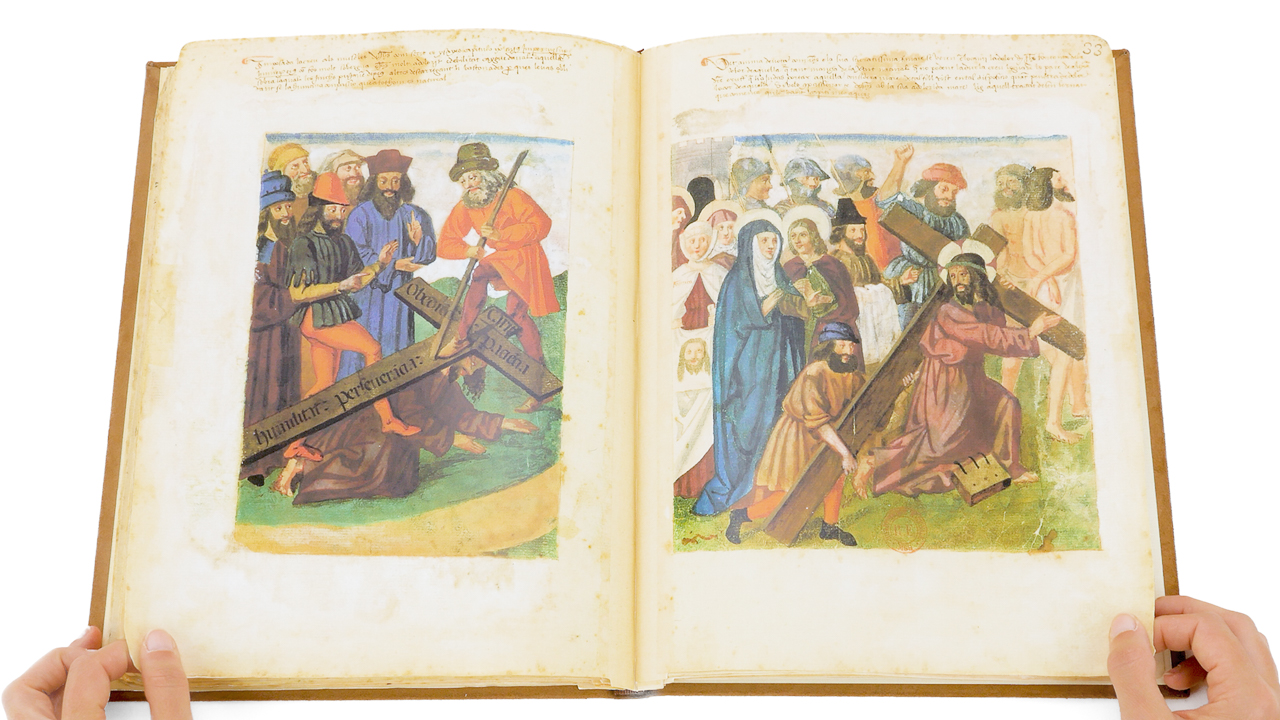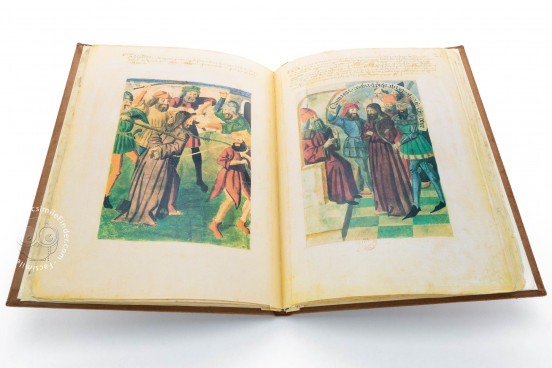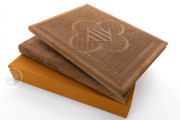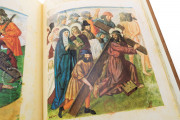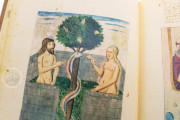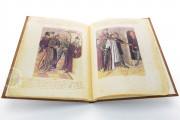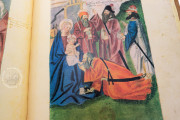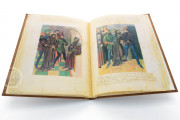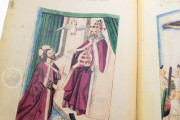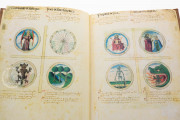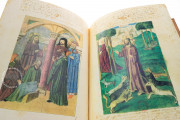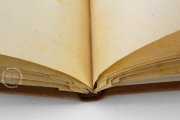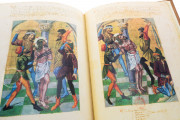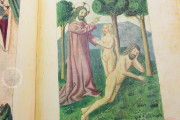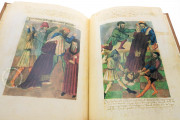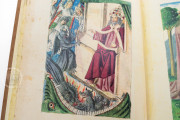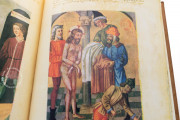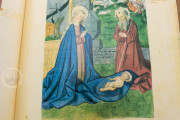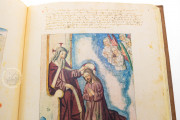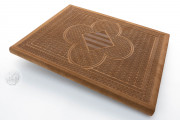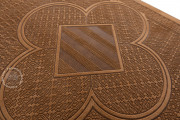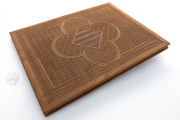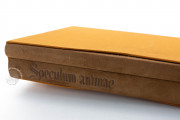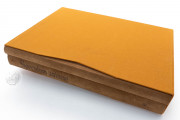The Speculum Animae ("mirror of the soul") in Paris is a picture book designed to aid a Christian believer's devotional practice. It dates from the early sixteenth century and was made in Valencia on the east coast of Spain. Most of its sixty-six full-page miniatures are narrative scenes from the life of Christ. They are prefaced by other subjects treating aspects of salvation history and theology. The narrative scenes comprise a gallery of brilliantly colored, often dramatic, paintings that invite prolonged contemplation.
Many paintings treat subjects common in Christian art of the period. Still, some are exceptional, such as the representation in the allegorical tradition of Christ as the Good Shepherd to a menagerie that includes a unicorn, a lion, a pelican, and an elephant (fol. 16r).
Christian Mysteries Pictured
The opening three pages, each presenting four medallions, depict key characters in Christian redemption history (fols. 1r-2r). Next, the mystery of the Trinity is addressed (fols. 2v-3r), followed by a treatment of the fall of Satan, the creation of Eve, and the fall of humanity (fols. 3v-5r).
An Extensive Passion Cycle
Most of the paintings treat the Incarnation and infancy (fols. 5v-8v), public ministry (fols. 13r-17v), and Passion (fols. 18r-38r) of Christ. The focus is on Christ's suffering and the Virgin Mary's compassion (co-suffering). Already in the scene of the circumcision of the infant Jesus, the Virgin's compassion is emphasized by the inclusion of a sword piercing her breast (fol. 6v). The text in the margin explains that this is the first of the Virgin's sorrows.
A Shift in Technique
The miniatures that precede the Life of Christ (fols. 1r-5r) are rendered in thinly applied colors of a limited palette, with the bare parchment playing an integral role in the presentation. When the subject turns to the Life of Christ (Annunciation to the Virgin; fol. 5v), the palette is broader, and the paint is applied more heavily, increasing the intensity of the presentation.
Devotion in the Local Dialect
The manuscript's main text—written in Gothic Cursiva by a single scribe and confined to nine pages (fols. 9r-12v and 20r) and the margins of pages occupied by paintings—is in the Valencian dialect of Catalan. It is an anthology of devotional texts on themes represented in the images with recommendations on their contemplation.
The text may be an otherwise lost work of Isabel de Villena (1430-1490). She is known to have written in the vernacular, and the themes resonate with those of her Vita Christi, but the evidence is circumstantial.
A few text headings and inscriptions in scrolls in some of the paintings (in Latin and Spanish) are written in large Gothic Textualis. The text in the scrolls heightens the drama of the depicted event, especially in the Passion scenes.
A Spanish Book in France
A canon of the cathedral in Huesca once owned the manuscript. The Bibliothèque nationale (now Bibliothèque nationale de France) acquired the book from a Parisian bookseller in 1899.
We have 1 facsimile edition of the manuscript "Speculum Animae": Speculum Animae facsimile edition, published by Edilan, 1992
Request Info / Price
